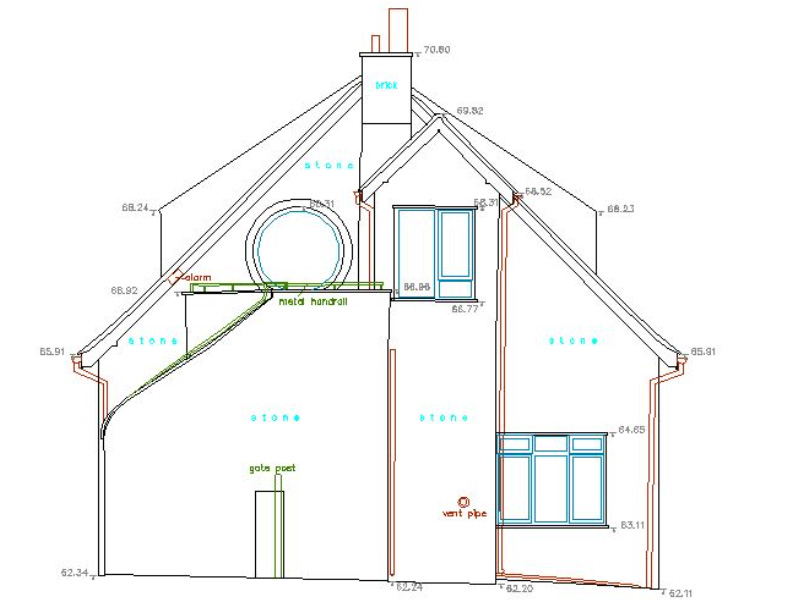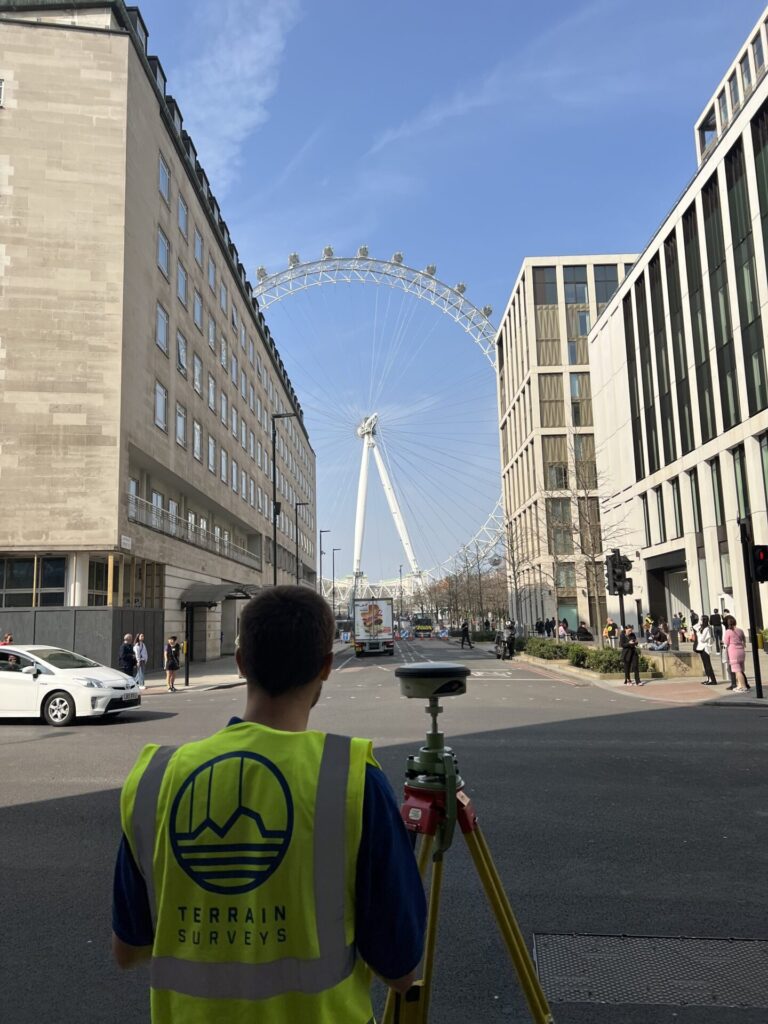Thinking about knocking down a wall? Planning an extension or a loft conversion?
You’re not alone. Having a proper floor plan of your home isn’t just a “nice-to-have” — it’s often essential.
In fact, UK estate agents have found that listings with floor plans generate up to 30% more interest from buyers. And even if you’re not selling, a good plan can help with everything from planning permission to accurate insurance cover.
So here’s your step-by-step guide to getting your hands on floor plans — whether you’re digging up old ones or starting fresh.
Step 1: Search for Existing Plans (Don’t Skip This)
Before you even think about reaching for the tape measure, do this.
There’s a good chance someone already created plans for your home — and tracking them down can save you serious time and cash.
You can start with:
Your Local Council (Planning or Building Department)
Every time a planning application is submitted, it requires detailed floor plans. So if your property’s had any work done in the last 20 years, the council probably has those plans on file.
How to check:
- Visit your council’s planning portal.
- Search by postcode or address.
- Look for PDF plans attached to past applications.
Pro tip: Even if the work was done ages ago, some councils keep paper archives or digital backups. Call them — they might be able to retrieve what you need.
Mortgage Lender or Solicitor
If you’ve bought your home recently, your solicitor may still have the floor plans from the conveyancing pack.
What to do:
- Ring up your solicitor or conveyancer.
- Ask if any layout or survey documents are on file.
- If you’re remortgaging, ask the lender’s surveyor — some may have basic plans in valuation records.
Original Builder or Architect
If your home is a new build or had major extensions, the original builder or architect might still have drawings. Designers are often required to submit detailed plans for planning approval and building regs.
How to chase this up:
- Contact the original developer or firm.
- Ask politely if they’ve got archived plans.
Old Estate Agent Listings
If your property has ever been on the market, there’s a chance the estate agent had a floor plan. Contact the estate agent to check if they have any drawings on file from when the property was listed.
You may also find a simple version of floor plans in Zoopla’s sold property archive, but it probably won’t be sufficiently detailed for something like planning an extension, but it would suffice for something like reselling the property.
Previous Owners or Neighbours
It might sound old-school, but don’t underestimate a friendly chat. The previous owner might’ve kept a copy of the plan or have a digital copy on their PC. Or if you live in a terrace or semi-detached, your neighbours might have near-identical layouts.
What to do:
- Reach out via social media or via mutual contacts.
- Knock next door and ask if they happen to have floor plans
If you need plans for construction work, then using a neighbour’s plans, or plans from estate agents could result in major problems. Near-identical doesn’t mean identical. Rough layouts are not robust enough for renovations. It would be best to get your own, exact floor plans for anything involving construction.
Step 2: Can’t Find Any Plans? Here’s What To Do
If your paper trail goes cold — no stress. You’ve got three solid options to create a brand-new floor plan:
- Hire a professional for a Measured Building Survey (most accurate)
- Use a DIY app or software (cheapest) NOT SUITABLE FOR CONSTRUCTION
- Get an architect or draftsperson to draw up plans – can be expensive
Option 1: Commission a Measured Building Survey (The Gold Standard)
If accuracy matters — and it usually does — a measured building survey is normally your best bet. It’s the best choice for architects, developers and councils.
What is it?
A professional surveyor visits your home and uses high-tech gear — like laser scanners or robotic total stations — to measure everything. We’re talking millimetre precision here.
They scan:
- Room dimensions
- Window and door positions
- Staircases
- Wall thickness
- Ceiling heights
- Roof slopes
Then they turn that into polished 2D or 3D drawings.
What you get:
- Scaled 2D floor plans (1:50 or 1:100)
- Internal elevations or sections (if requested)
- Roof plan (for loft work or solar panels)
- 3D BIM model or point cloud (for detailed design or VR visualisation)
Output formats: PDF, DWG, Revit, IFC — basically, whatever your architect or builder needs.
Why it’s worth it:
- Precision: Essential for structural work, planning applications or building control.
- Speed: Survey done in hours, drawings a few days after.
- Professional recognition: Members of The Survey Association (TSA).
- Future-proofing: These plans can be reused for years — insurance, refurbs, valuations, even selling.
Cost:
Expect to pay several hundred pounds for a full set on a typical 2–3 bed home. Price varies by size, location, and how detailed you want it. But it’s a one-time investment that could save you thousands in mistakes later on.
If your builder puts a wall or window even a few inched in the wrong place, it can mean knocking down and rebuilding. If the builder can blame inaccurate drawings for the error the fix will be at your expense.
Option 2: Use a DIY App or Software (Budget-Friendly Route)
Want to whip up a plan yourself? These apps can help. They’re quick, simple, basic and often free — though not 100% precise. If you just need plans to help you organise furniture layout, or DIY interior design, then apps provide the perfect, low cost solution. Do not use apps to generate plans for any construction work.
Top Apps for DIY interior design projects:
- RoomSketcher: Desktop or tablet-based. Draw walls, place doors/windows, measure up. Good for 2D & 3D.
- MagicPlan: Uses your phone camera to scan each room. Can be surprisingly accurate (claims ~95%) if lighting’s good.
- Floorplanner: Web-based with lovely 3D visuals. Great for showcasing furniture layouts or design ideas.
Pros:
- Free or cheap (some with paid export options)
- Quick to set up
- Instant 3D views — ideal for visualising a redesign
- Great for planning furniture layouts
Cons:
- Limited accuracy: Typically, ~90–95% even with care.
- No legal standing: Won’t pass for planning apps or serious building work.
- Some effort required: You’ll still be walking around with a tape measure or phone scanner.
- Export limitations: Free versions often watermark or restrict usage
Think of it like sketching on a napkin — good enough for early ideas, but not to build from.
Option 3: Hire an Architect or Draftsperson
If you’re already planning a big project, it often makes sense to kill two birds with one stone. Architects often offer measurements as the first step in their design process.
What they do:
Architects (or architectural technicians) can measure your home and create “as-existing” plans, plus design proposals for new work. Their drawings meet planning and building regs standards — and they’ll then be able to start the design process seamlessly.
Pros:
- High-quality, design-led drawings
- Seamless integration with proposed changes
- Can submit directly to the council for you
- They’ll likely include a site visit and basic measures as part of their design package
Cons:
- Cost: Architects often charge a premium. If you provide them with accurate drawings of existing structure, it could lower their fees from the outset.
- Less accurate: Architects are primarily designers so while their measuring process is acceptable, it’s often less accurate than the output from survey company. This is because most architectural firms still rely on a tape measure. On the other hand, surveying specialists use the latest and most accurate laser technology.
- May still need a surveyor if ultra-high accuracy is required, architects may outsource a specialist surveyor to take the measurements and mark up the price.
If you’re already hiring an architect for construction design, get an itemised cost for the measuring component of the service and compare that price to a free quote from a specialist survey provider.
Still Not Sure Which One’s Best?
Let’s compare them side-by-side.
| Method | Accuracy | Cost | Good For |
| Measured Building Survey | ★★★★★ (Excellent) | ££–£££ | Legal plans, building work, planning apps |
| DIY App (RoomSketcher etc.) | ★★
(decent) |
Free–£ | Rough layouts, visualising ideas |
| Architect/Draftsperson | ★★★★
(Very good) |
£££–££££ | Full design projects, creative remodels |
Each has its place. If you’re doing major works or need something council-ready — go pro. If it’s just for yourself or a casual purpose, DIY might do the trick.
Why Measured Building Surveys Are Worth Every Penny
You might be thinking: Do I really need to spend that much just for a floor plan?
Here’s the deal — if you’re doing anything beyond choosing paint colours or moving a sofa, accuracy matters. A dodgy measurement could mean planning rejections, build delays or worse — structural mishaps and costly rebuilds.
Here’s what sets measured surveys apart:
- Millimetre precision. They’re done using Leica 3D laser scanners, total stations, and advanced CAD software.
- Comprehensive outputs. Not just floor plans — you get elevations, cross-sections, even reflected ceiling plans if needed.
- Planning-ready. These drawings are legally accepted for planning applications and building control.
- 3D-ready. Most surveyors now supply a full Revit/BIM model or a point cloud you can explore digitally or import into design software.
And it’s not just about measurements. These plans become your home’s blueprint for years to come — ready for architects, builders, insurers or estate agents to use as needed.
What does the process look like?
- You book a survey with a professional (like Terrain Surveys).
- They visit your home — often in under a day.
- They scan every dimension using laser tech.
- Within a few days, they send you CAD drawings or PDFs (depending on your brief).
Simple, clean, and extremely reliable.
Why Choose Terrain Surveys for Your Floor Plans?
Let’s talk about a UK leader in this space: Terrain Surveys.
We’re TSA members with thousands of successful surveys under our belt. What makes us stand out?
- Nationwide coverage. Whether you’re in Cornwall or Carlisle, we’ve got local teams ready to help.
- Fast turnaround. You’ll get full plans, often within just a few working days.
- Tech-forward. We use Leica 3D scanners and Revit to produce ultra-accurate digital models.
- Experienced team. Our surveyors handle everything from single flats to heritage estates to enormous commercial developments.
We’ve been operating since 2004, so we’re not just showing up with a laser tape and hoping for the best.
Get Your Floor Plans Today!
Need accurate, professional floor plans for your home? Contact Terrain Surveys for a free, no-obligation quote today!



